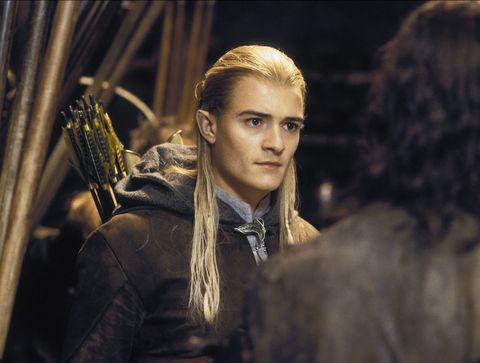The elf it has been present in different eras, in many shapes and sizes. One of the more common types of elves that most people grew up with in the 21st century are the elves (or pixies) who live with Santa and help him prepare presents. When you get a little older you meet the Elves of JRR Tolkienwith an ethereal beauty and an elegant language. The elf is a mythical creature of Germanic origins that still lives on in northern European folklore. In Norse mythology they were originally a race of minor nature and fertility deities. Elves are often depicted as young, beautiful looking men and women who live in forests and other natural places, underground or in wells and springs. They have been described as long-lived or immortal and often have gods Magic powers. After the success of JRR Tolkien’s work The Lord of the Ringsin which a wise and angelic people named plays a significant role, have become key characters of the modern fantasy.
What is an Elf?
Elves come in many forms; some are tiny, others are tall and almost human looking.
These supernatural beings are often present in Germanic mythology and folklore and first appeared in some Old English and Norse texts and became prominent fantastical figures in British and Scandinavian folklore.
Elves are described as having magical powers, but over time they have become increasingly sinister, harming humans and livestock in a variety of ways. In modern folklore they are compared to fairies and change their face, in the 20th century, mainly thanks to works by JRR Tolkien.
The English word elf comes from the Old English ælf or elf; in compounds such as ælfadl ‘nightmare’, ælfsogoða ‘hiccup’, afflictions apparently believed to be caused by elves. The boundaries between elves and other spiritual beings such as gods, giants, dwarves and earth spirits they are not clear-cut and it seems that there has never been a real distinction between these various groupings.
Elves have a special relationship with humans. The elf is capable of making humans sickbut is also in possession of the power to heal them and seems particularly willing to do so if offered a reward.
The elf in Germanic mythology
To make a definitive grouping and divide apparently similar creatures into categories is Jacob Grimm in the work Teutonic mythology. The author states that according to Norse mythology there are three types of elves; the Æsir, the álfar and the vanir.
Grimm argues that there is also a close kinship with the dwarves, not only because of their similar appearance, but also because many of them have elven names. Derived from various Norse writings, dwarves are also elves, but they are the ‘dark elves’, while the ‘light elves’ are the classic elves that have entered the common imagination.
Norse mythology
The first written records concerning elves come from Norse mythology: in Old Norse they are called álfar. The Norse held that even humans could be elevated to the rank of elves after death, such as King Olaf Geirstad-Elf. Another example in this sense is the hero Völundr, identified as ‘Ruler of the Elves’ in the poem Völundarkviða.
Although the elves are anthropomorphic, are commonly described as semi-divine beings associated with fertility and ancestor worship. Just like ghosts, elves were not bound by any physical laws and could pass through walls and doors. Other than that, the saga of Kormaks explains how a sacrifice to the elves was a solution to heal a serious battle wound.
Santa’s elves
In the United States, Canada, the United Kingdom, and Ireland, modern Christmas folklore has green-robed elves with pointed ears, long noses, and pointy hats as Santa’s helpers. These little elves are in charge of making toys in a workshop located at the North Pole. The role of elves as Santa’s helpers has continued to be popular, as evidenced by the success of the popular Christmas movie Elf.
The elf of contemporary fantasy
The elves Fantasy post-Tolkien (popularized by Dungeons & Dragons) tend to be prettier and wiser than humans, with more developed senses. They are said to have arcane powers, are extremely intelligent, and are lovers of nature, art, and song. They are often skilled archers and are characterized by their pointed ears. The contemporary elf is every bit a better version of us.

